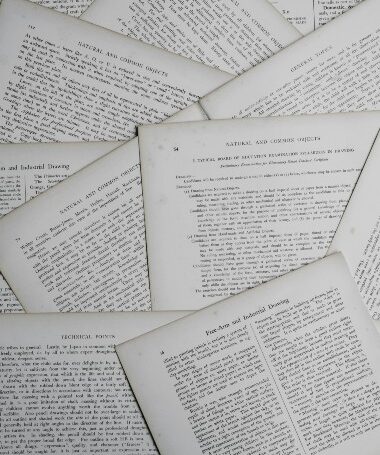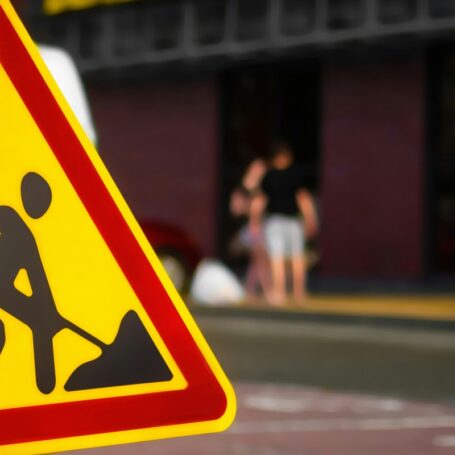 Communication
Communication Concrete Advice for Writing Informative Abstracts
 Reading the abstracts for academic journal abstracts can be as frustrating as trying to work out what their titles mean. In the same way that many PhDers and academics carefully choose useless titles for their papers or chapters, so it is common to find that journal article abstracts actually say little about what the researcher has discovered.
Reading the abstracts for academic journal abstracts can be as frustrating as trying to work out what their titles mean. In the same way that many PhDers and academics carefully choose useless titles for their papers or chapters, so it is common to find that journal article abstracts actually say little about what the researcher has discovered.
They will often contain a description of an earlier literature or research, perhaps indicating previous difficulties or approaches in the sub-field. Most abstracts also say something about what methods the authors have used here. They normally suggest (sometimes in an oblique fashion) what research question an article tackles. Often readers are told in an obscure way that the approach used here differs in some respect from previous work, or that the authors have tried to conceptualize an issue or measure some phenomenon differently. To wrap up, the most ambitious authors will sometimes make some form of credit claim about how their analysis has achieved something, or added value in a tricky area.

This piece by Patrick J. Dunleavy originally appeared on his “Writing for Research” blog as “Writing informative abstracts for journal articles”. It is reposted with permission. Patrick tweets @Write4Research.
What rarely gets covered in all this are the actual key findings of the article. Readers are normally left to guess what the researcher’s ‘bottom line’ conclusion or academic ‘value-added’ is, still less what key ‘take-away points’ the author would ideally want readers to remember. The final conclusions or key arguments made in the article usually remain an enigma, shrouded in delicate veils of obscurity, perhaps hinted at suggestively but discreetly, but never frankly set out. This vagueness comes on top of the well-known general tendency for the predominant message of journal articles to be that the world is resistant to research, many problems are more complex than they look, and consequently more research is needed.
Why are abstracts so uninformative?
There are multiple reasons for this pattern of poor abstract-writing. First, academics (especially early career researchers and PhDers) are often diffident people, obsessed with the provenance of their work at the expense of its substantive content. They want to prove that what they did was legitimate work, far more than to think through what it really means or demonstrate that it was valuable. Researchers are also often risk averse, convinced that making any explicit or easily decipherable summary claims about what you have found out could easily seem brash and risky to reviewers. Far better to amplify only a little an obscure, or purely formal, or conventional article title, using the abstract to give some more details of the ‘box’ that the work falls into, without actually saying what the results were.
Abstracts also tend to be rather casually written, perhaps at the beginning of writing when authors don’t yet really know what they want to say, or perhaps as a rushed afterthought just before submission to a journal or a conference. Some academics actually seem to start writing their abstract only after they have begun the online submission process, and so just clutch at a few, random straws to fill up some of the wordspace allotted to them. Others discover that their earlier or conference-vintage abstract is over-long, and so have to edit it down on the spot to fit within the journal’s precise word limit.
Once an abstract exists, authors are also often reluctant to reappraise them, or to ask critically whether they give the best obtainable picture of the work done and the findings achieved. Colleagues reading the paper often skim past the abstract and rarely comment on it. And sadly most reviewers and journal editors also give authors little useful advice about how to improve an abstract that is dull, uninformative, tangential or vague. Journal style sheets are normally silent about the need for abstracts to be carefully written, substantive and informative.
The costs of poor abstracts
Neglecting abstracts has very real costs, however. Typically you have between two and five years for your article to attract the attention of other researchers and to get cited. After that it’s basically burnt toast. And of course, the wheels of academia often turn slow, so that your window of opportunity is eroded at the start too, especially in the humanities and ‘soft’ social sciences.
Is a video abstract coming to a journal near you?
Scott Spicer at The Lib Pub blog says yes.
I have discussed elsewhere how titles are very important for ‘selling’ your paper, for making it interesting enough to potential readers that they go from a snippet view in Google or another research database to looking at the whole abstract. But once that hurdle is past, your abstract is then key in persuading readers to go further, to actually download the paper, with all the extra hassle that may be involved if their library has poor electronic access, or to search out the paper via the library if their university does not already subscribe to the journal.
The abstract powerfully conditions these critical few seconds or minutes you have in front of each potential readers’ eyes. Wasting this key exposure time on describing earlier literature, woffling about your methods, or obscurely or vaguely hinting at what your conclusions are is a kind of academic suicide. The baffled reader moves on none the wiser to the next batch of the 200 ‘possibles’ they will search through that morning.
A checklist for improving abstracts
To counteract these problems it can be useful to have a structured set of questions to ask about your abstract, a list of things that you should include, and some suggestions about how many words to devote to different elements.
1. How long is your abstract in words? At at an early stage it should always be between 175 words (minimum) and 300 words (maximum) depending on the varying practices across disciplines. At a late stage, does it fit in the word limit for your target journal (shown in the journal’s stylesheet)? If not, edit it down so that it does, and count words precisely. Does your abstract have paragraphs? [No more than 2]
2. How much information does the abstract give about the elements below? I also suggest a maximum number of words for each component (assuming a 300 word abstract — reduce these numbers pro rata if your target journal has a lower limit.)
- Other people’s work and the focus of previous research literature? [None, A bit, A lot] Assign no more than 50 words
- What is distinctive to your own theory position or intellectual approach?[None, A bit, A lot] Assign at least 40 words
- Your methods or data sources/datasets? [None, A bit, A lot] Assign 40 words minimum to 120 maximum, depending on how methodologically innovative your work is.
- Your bottom-line findings i.e. what ‘new facts’ have you found? Or what key conclusions you draw? [None, A bit, A lot] Assign as many words as possible within your limit. Be as substantive as possible. Don’t be vague, obscure, formal or conventional. Tell us clearly what you found out, not just what topic box you were studying in
- The value-added or originality of your work within this field? [None, A bit, A lot] Assign at least 30 words. Make a moderate claim, motivate readers to learn more.
3. Does the abstract systematically follow the sequence of elements given above? [good] Or does it have some other sequence? [bad] Is the progression of ideas clear and connected?
4. How many theme/theory words from the article title recur in the abstract? Does the abstract introduce any new theme/theory words, that are not present in the article title? Do the two sets of words fit closely together? [good] or suggest different emphases? [bad]
5. Style points: How many words are wasted on ‘This article sets out to prove..’ or ‘Section 2 shows that…’? Get rid of all such ‘blur’ elements. Is the description of your own research in the present tense? [good] or the future tense?[bad]
6. Look carefully at the ‘ordinary language’ words in the title, and in the abstract text. Are they ‘filler’ words only? In which case, are they needed? If not, do they have a clear and precise meaning or implication that you want your title and abstract to express? (Most ordinary language words with substantive content will have multiple meanings).
7. Suppose that you have read on the Web (in a long list of other articles and items) the article title and the first three lines of the abstract. Are they informative? Do they make you want to download the full article? What kind of academics elsewhere will be able to reference this article usefully in their own work, from the information given in the title and abstract alone?
8. Type the whole title (in double quotes “ ”) into Google Scholar and check against the questions below.
- How many items show up? None [good]. Many [poor].
- How do most of the other references or items that show up relate to your topic and subject matter? Very close [good]. Close [OK]. Remote [bad]. Completely different topic [very bad]. Wrong discipline [very bad]
- Does the search show that you are using terms, phrases or acronyms that – Have the same meaning as you are using? [good]. Or have a number of different meanings from your sense? [bad]
9. Now type the three or four most distinctive or memorable title or abstract words separately into the search engine, and check against the same questions.
- How many items show up? None [bad]. Very few [bad]. Modest number [good] Lots and lots [bad] — it’s an inverted U curve here.
- How do most of the other references or items that show up relate to your topic and subject matter? Very close [good]. Close [OK]. Remote [bad]. Completely different topic [very bad]. Wrong discipline [very bad]
- Does the search show that you are using terms, phrases or acronyms that — Have the same meaning as you are using? [good]. — Or have a number of different meanings from your sense? [bad] Article titles need to be less distinctive than books or theses, or chapters in these longer works. It is fine for your title and abstract to have some of the key words used by other authors, but preferably in some distinctive combination with other (ordinary language) words.
10. How does your abstract (and article title) sit within the journal title itself, which often gives readers many clues to what the work is about? Are you wasting words in the abstract explaining things that the journal title already makes clear?
Afterword
This is a menu of suggestions and so it will always need adapting to your particular discipline, topic and circumstances. Pick and choose among the advice here. Use what works but don’t worry about what seems less relevant — just as in a restaurant you don’t eat everything on the menu.
As with all checklists or guidelines, remember too that academia works best when researchers are inventive. Consider, for instance, the article by M.V. Berry and colleagues in the Journal of Physics A: Mathematical and Theoretical (2011) entitled: ‘Can apparent superluminal neutrino speeds be explained as a quantum weak measurement?’ Their abstract was two words long: ‘Probably not’.
***
To put these ideas in a wider context, you might find it helpful to read parts of my book, ‘Authoring a PhD’ (Palgrave, 2003).



























































































